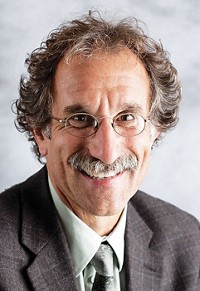Advertisement
Grab your lab coat. Let's get started
Welcome!
Welcome!
Create an account below to get 6 C&EN articles per month, receive newsletters and more - all free.
It seems this is your first time logging in online. Please enter the following information to continue.
As an ACS member you automatically get access to this site. All we need is few more details to create your reading experience.
Not you? Sign in with a different account.
Not you? Sign in with a different account.
ERROR 1
ERROR 1
ERROR 2
ERROR 2
ERROR 2
ERROR 2
ERROR 2
Password and Confirm password must match.
If you have an ACS member number, please enter it here so we can link this account to your membership. (optional)
ERROR 2
ACS values your privacy. By submitting your information, you are gaining access to C&EN and subscribing to our weekly newsletter. We use the information you provide to make your reading experience better, and we will never sell your data to third party members.
HAVING SPENT the past 30 years as an analytical chemist both performing and teaching quantitative and qualitative analysis in an industrial setting, I read "Quant Lab Revisited" with great interest (C&EN, Jan. 5, page 32). In my experience, far more chemists will use chromatographs than burettes, but I don't think an introductory quantitative analysis course should be turned into an introduction to chromatography or a survey course in chemical analysis techniques.
My adult students bring to class the one subject that is routinely missing in the intellectual toolboxes of both students with bachelor's degrees and postgraduates—concepts associated with calibration. These concepts are important to chemistry majors and to other students who will use chemical analysis or other measurement techniques in their careers.
From a pedagogic perspective, calibration is useful as a central thread in analytical chemistry, from performing the calibration for a quantitative chromatographic analysis to the "tuning" of a mass spectrometer. This central thread, including concepts of multipoint calibration using linear and nonlinear calibration curves, applies to most quantitative techniques and to the preparation of the analysis platforms that generate quantitative data that will be studied in more advanced classes or used for making chemical or other measurements.
In an introductory course, discussing limits of detection and quantitation, data reporting, quality assurance and control, limits of interpretation, and standard addition methods will prepare students for their real-world applications. Calibration is implicitly stated in equilibrium chemistry by the definition of "equivalents."
In my 10 years of taking academic courses, primarily in organic and analytical chemistry, I had a number of excellent professors, but only one has been innovative enough to develop a course around a fundamental central theme. I think redesigning the introductory quantitative analysis course with calibration as a central thread will make the course easier for students to assimilate and provide concepts that they should use every time they make a scientific measurement. Selection of measurement techniques for the lab needs to be consistent with the theme of the course, but techniques are secondary if they are properly constructed and integrated with the body of the course material.
Robert J. Kobelski
Alpharetta, Ga.
KUDOS TO those quoted in "Quant Lab Revisited" who understand why it's so important to overhaul the "old standby" general chemistry coursework.
Do we require students to learn how to use a slide rule? Nope, we teach them to use the tools they'll use in the workplace: calculators, computers, instruments, and software. So why should these same students be required—under ACS approval guidelines—to revisit chemistry that was part of the slide-rule era? Let's concentrate on teaching our chemistry graduates usable skills, not the esoterica they might learn on their own or in a special project or elective. With the volume of information in textbooks that chemistry students must master, the least we can do for them is to provide them with useful instrumental skills from the get-go.
Martha Dibblee
Portland, Ore.




Join the conversation
Contact the reporter
Submit a Letter to the Editor for publication
Engage with us on Twitter